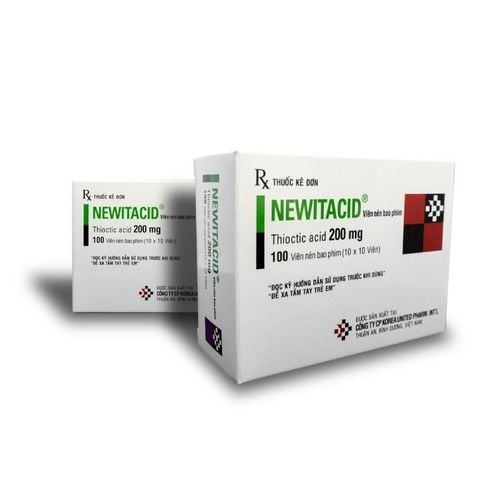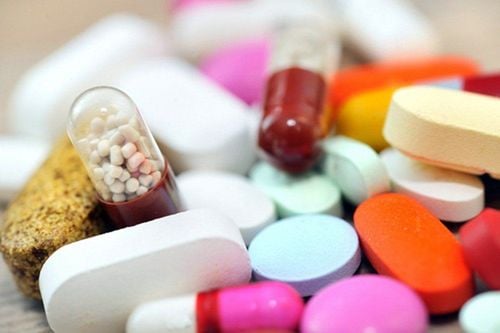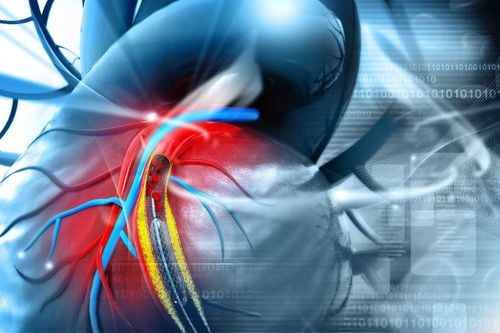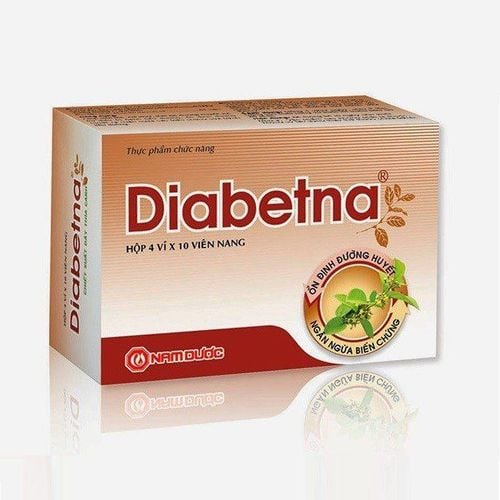This is an automatically translated article.
The article is professionally consulted by Master, Doctor Nguyen Van Phong - Cardiovascular Center - Vinmec Times City International HospitalHigh blood glucose levels increase the risk of death and heart failure in diabetics with heart attacks. The manifestations of coronary heart disease in patients with diabetes can be very subtle and difficult to recognize in practice. The goal of coronary artery disease treatment in patients with diabetes is to closely control blood sugar before, during, and after myocardial infarction to increase survival.
1. Measures to treat coronary heart disease in patients with diabetes
1.1. Hyperglycemia and insulin resistance Many studies have shown that aggressive diabetes control reduces the risk of all cardiovascular events, as well as death from myocardial infarction or stroke. Accordingly, altering metabolic syndrome factors may reduce the risk of cardiovascular events.
Elevated blood sugar is a major manifestation of diabetes, with harmful effects on vascular function and lipid metabolism. According to the UKPDS (United Kingdom Prospective Diabetes Study), tight blood sugar control is associated with a reduced risk of small vessel complications (such as glomerular disease and retinopathy).
Besides, taking metformin to improve insulin resistance will reduce macrovascular complications. Levels of insulin resistance are directly related to increased events of acute myocardial infarction, stroke, and peripheral vascular disease. The current class of diabetes drugs associated with insulin resistance are biguanide (metformin) and thiazolidinedione (TZD) (including rosiglitazone, pioglitazone). These drugs have many important implications in the treatment of coronary heart disease in patients with diabetes :
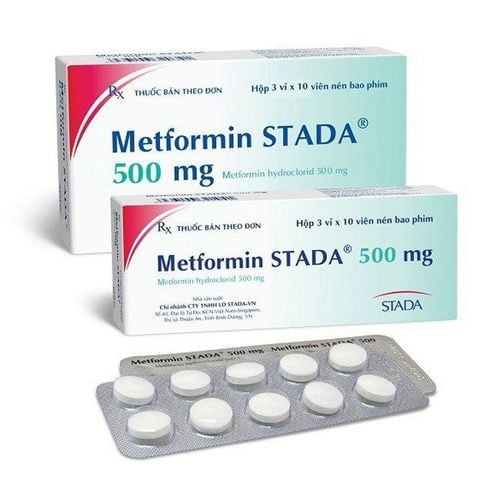
Metformin has the effect of reducing insulin resistance, thereby reducing macrovascular complications in patients with diabetes; Rosiglitazone and pioglitazone (TZD class of drugs) in addition to insulin sensitivity also have other effects on patients with coronary heart disease such as lowering blood pressure, improving endothelial function, reducing inflammation of the vessel wall, and slowing the progression of coronary artery disease. vascular smooth muscle cell proliferation, improved LDL phenotype, and thus antioxidant capacity; Other classes of antidiabetic drugs, such as sulfonylureas, N-glucosidase inhibitors, and non-sulfonylureas, have no direct effect on insulin resistance, but they do improve hyperglycemia. bleeding and may reduce microvascular complications. 1.2. Hypertension Control of hypertension in patients with type 2 diabetes is associated with effective treatment of coronary heart disease, by reducing cardiovascular events and mortality. According to the UKPDS study, treating hypertension in patients with type 2 diabetes can reduce major vascular events.
Use of antihypertensive drugs should be considered if blood pressure readings are greater than 130/80 mmHg, despite intervention with non-pharmacological measures to reduce blood pressure such as exercise and weight loss.
Using Angiotensin-converting enzyme inhibitors or dual blockade of the Renin - Angiotensin system reduces cardiovascular complications more than other antihypertensive treatment groups. These two classes of drugs can slow the progression of microvascular disease and kidney disease.
Cons: Antihypertensive drugs, such as thiazide diuretics, can adversely affect lipid metabolism and glucose tolerance. Therefore, the risks and benefits should be weighed when selecting a class of antihypertensive agents in patients with insulin resistance, diabetes, and coronary artery disease.

1.3. Dyslipidemia Drugs for the treatment of coronary heart disease in diabetic patients should aim at another goal of controlling blood lipids . The metabolic syndrome is characterized by elevated triglycerides, decreased HDL, and elevated LDL-C.
Lifestyle changes are often the first choice doctors prescribe to treat dyslipidemia associated with metabolic syndrome. Unstable blood sugar increases lipid metabolism abnormalities, causing the liver to increase production of VLDL. Tight glycemic control reduces hepatic production of VLDL and improves plasma free fatty acid concentrations.
In cases where lipid metabolism abnormalities cannot be responded to by lifestyle changes and glycemic control, pharmacological treatment should be considered. The recommended drug classes include: HMG-CoA Reductase inhibitors (Statins group), bile acid-conjugated resins (mainly effective for LDL-C elevation), fibric acid derivatives (mainly acting on anti-inflammatory drugs). hypertriglyceridemia), and niacin (co-acting on both cholesterol and triglycerides).
Cons: Niacin - the 3rd group of drugs in the treatment of dyslipidemia may adversely affect glucose tolerance and increase insulin resistance.
1.4. Aspirin Therapy Low-dose aspirin therapy has been shown to reduce coronary artery disease events in patients with diabetes with concomitant CVD or additional CVD risk (over age 40 years, family history of cardiovascular disease). , hypertension, smoking habits, dyslipidemia, or albuminuria from 30mg/24h). Aspirin at doses of 81-325 mg/day is recommended in all adult patients with diabetes and concomitant macrovascular disease.
Cons: Not for people who are allergic to Aspirin, at risk of bleeding or have just had gastrointestinal bleeding, are taking anticoagulants and have advanced liver disease.

2. Notes in the treatment of coronary heart disease in patients with diabetes
Principles of coronary heart disease treatment in diabetic patients are:
Good control of blood sugar as recommended: Based on fasting blood sugar test results and HbA1C level. Depending on age and combined disease status, fasting blood sugar must be ≤ 7.0 - 7.5 mmol/l and HbA1C ≤ 6.5 - 7%. This is the main problem, if not well controlled, it will not be possible to control the complications of diabetes in general. Comprehensive treatment, not only focusing on the treatment of coronary or cerebrovascular disease, but must combine the treatment of accompanying risk factors, especially hypertension, smoking and dyslipidemia. Follow up regularly and periodically to promptly detect complications, from which to have early and thorough treatment. In summary, diabetes is a reality and challenge in the treatment of coronary heart disease. The strategy of percutaneous coronary revascularization or bypass surgery in diabetics depends on the individual case. The core issue is comprehensive treatment of cardiovascular risk factors. In general, all patients with coronary artery disease should be referred to the catheterization department for definitive diagnosis, risk stratification, or revascularization when appropriate.
Monitoring and treatment of coronary heart disease in patients with diabetes is essential work to protect the health of the patient. Currently, at the Cardiovascular Center - Vinmec Times City International General Hospital has been implementing programs of examination, screening, management, monitoring and treatment of cardiovascular diseases, diabetes, .. The entire procedure is performed by a team of leading specialists and is closely coordinated with many specialties: Diagnostic Imaging, Biochemistry, Immunology, Endocrinology, Nutrition. ... to bring efficiency as well as ensure long-term health for patients. After going through the treatment phase, the patient will also be monitored and re-examined to determine whether the treatment is effective or not.
If you have a need for examination, monitoring and management of diabetes and cardiovascular diseases, you can go directly to Vinmec Times City International General Hospital or register for an online examination.
Please dial HOTLINE for more information or register for an appointment HERE. Download MyVinmec app to make appointments faster and to manage your bookings easily.






